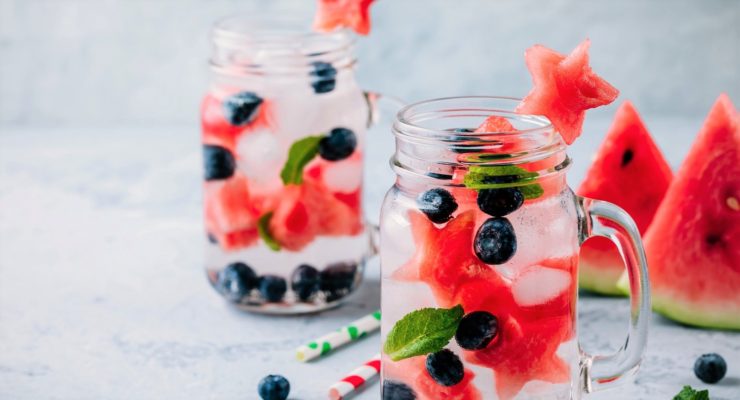Planting Vegetables? 5 Low-Maintenance Veggies You Can Grow at Home
Article posted in: Lifestyle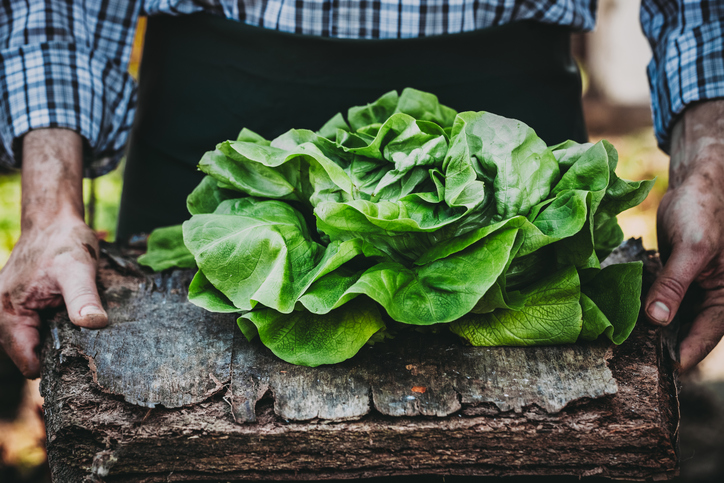
Planting vegetables is so rewarding. There’s nothing quite like having healthy, fresh ingredients right outside your door. They’re right there to eat whenever you’re hungry, and you get to enjoy them at their peak of freshness and flavor.
If you’ve toyed with the idea of planting vegetables, you don’t even need a lot of land—or, in fact, any land to start. Raising a few garden crops and reaping a satisfying harvest doesn’t even require too much time, or even green thumb.
Here are a few hints that will help you have success planting vegetables:
1. Sun
Plants that bear fruit you pick, such as tomatoes and cucumbers, produce best when they get sunlight all day. Leafy plants, like lettuce and herbs, do fine with a minimum of six hours of daily sun.
2. Soil
Mix compost into your garden beds before planting, to loosen the soil for roots that spread out and hold moisture without getting soggy. You can buy it in bags or bulk. Use potting mix for containers because the soil you dig up in your yard is very dense, which can cause plants to get waterlogged.
3. Water
Deep, infrequent watering—rather than sprinkling daily—encourages plants to grow large root systems, resulting in more robust tops. Once or twice a week, soak the soil around the base of the plant, not the leaves. Keep a layer of mulch, like grass clippings or leaves, on your beds to hold moisture in the soil.
4. Fertilizer
Feed your crops every other week, from when they have at least two pairs of leaves until they start flowering. Liquid organic fertilizer, typically made with fish and seaweed, nourishes plants naturally. Be sure you follow the recommended dilution rates—just like with people, proper portion sizes are key to staying healthy.
These five, low-maintenance crops make planting vegetables a breeze:
1. Tomatoes
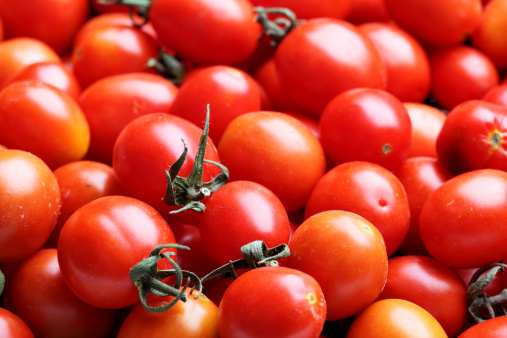
Why: The tomatoes found in grocery stores are usually picked green and shipped across the country, so they tend to be mealy and bland-tasting. Homegrown tomatoes turn ripe on the vine so they’ve developed their rich, full flavor when you eat them.
Which: Cherry tomato varieties grow fast and produce a steady supply of little red, orange or yellow treats from midsummer to frost. Sweet Million is a reliable variety, but if you are growing in pots, go with more compact Tiny Tom. For bigger tomatoes, plant Celebrity, which bears dozens of red, baseball-size fruit all season long. Want to make salsa or sauce? Look for Roma tomatoes. No matter which you choose, start with little seedlings, rather than seeds. You’ll find these and lots of other choices at your local garden center.
How: Transplant your seedlings outside as soon as nighttime temperatures are warmer than 60 degrees. Set them at least 12 inches apart, because, while they’re tiny now, you want to leave plenty of room for them to spread out as they grow. When the stems reach about a foot tall, give them support with sturdy stakes (bamboo works well) or tomato cages.
2. Salad Greens
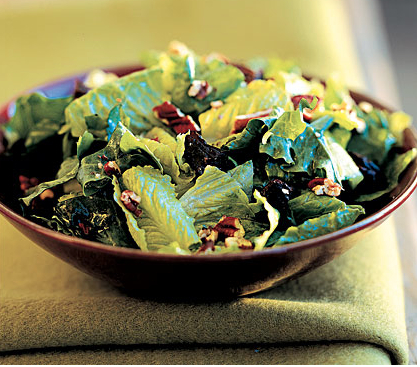
Why: Leafy greens are so healthful and you can eat them in so many ways. Planting your own leafy green vegetables gives you a steady supply that you can harvest just about every day. Not to mention, when you grow them yourself, you can enjoy different varieties than the same old Iceberg lettuce.
Which: Look for “looseleaf” types of lettuce—rather than those that form a head— because you can snip and eat just a few leaves from them at a time, and the plants continue growing new leaves. Consider including red and speckled varieties or mesclun mix to give your salads an interesting blend of colors, shapes and textures.
How: Lettuce and other greens grow best in spring and fall, when temperatures are cooler than in summer. Starting with seedlings is easy, but you can also plant seeds. Once the leaves reach about six inches long you can begin to snip and eat them, but be sure to let a few leaves remain on each plant so they can absorb sunlight and keep the plant producing new ones. When they start to get too thick or a flower stalk comes up (commonly occurring when the weather turns hot), the plant is finished producing and you can pull it out.
3. Cucumbers
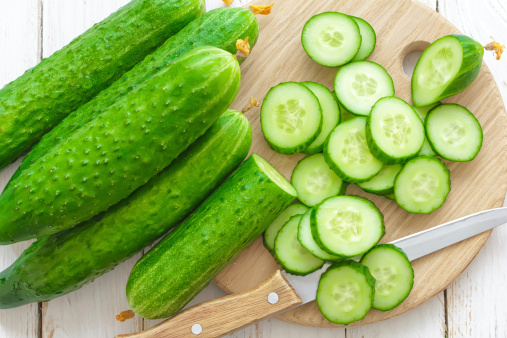
Why: A bite of fresh-picked cucumber is cool and refreshing on a hot summer day. Grow your own and you will have plenty to snack on. They’re also perfect for adding flavor (and fiber) to salads and sandwiches all season long. Try your garden-fresh blend in our recipe for Pom-Cheesy Cucumber Bites– you won’t regret it.
Which: “Bush” varieties stay compact, so they can grow in small spaces or even large containers. Salad types are bigger and juicier, while picklers are smaller and meatier, with fewer seeds inside. Start with seedlings rather than seeds, which are slow to germinate.
How: When nighttime temperatures warm up to 60 degrees, plant cucumbers in a sunny spot. To keep them healthy and manageable, you can set up a trellis and guide the vines onto it. They have little tendrils, so they will cling and then climb. Pick the ripe cukes regularly to keep new ones forming.
4. Basil

Why: Fresh herbs let you flavor up your food without loading on extra calories. Basil produces a steady harvest of fragrant leaves for months. All you have to do is snip them as needed—no other care needed. Even if you live in an apartment with just a sunny windowsill, you can grow a pot of basil.
Which: Sweet Italian basil is the familiar type used in Caprese salads (and Leaf favorites like the Caprese Kebabs or Caprese Turkey Burgers), but you might also enjoy those with a hint of spiciness, such as Cuban basil or purple-stemmed Thai basil.
How: Basil is very cold sensitive, so wait until all danger of frost has passed before planting seedlings in a sunny, dry spot. Once the plant has four pairs of leaves, you can start trimming off some to eat, but always let at least two pairs remain. Toward the end of summer, flower spikes form—cut those off right away and you’ll continue to get fresh new leaves to eat.
5. Peppers

Why: Sweet or hot, peppers bring a pop of flavor to many dishes. If you’ve ever had them stuffed, like the Veggie and Rice Stuffed Peppers, you already know. In your garden, you can let them ripen to their richest color—red in most cases—and hit their peak of nutrition before you pick them.
Which: Ace bears dozens of medium-sized red bell peppers. Lipstick produces even more, though its fruit is smaller and heart-shaped. El Jefe is a reliable jalapeno, but if you like more heat try Hungarian Hot Wax. All fare well in large containers and in gardens.
How: Peppers are native to the tropics, so they thrive in sunny, hot spaces. Plant seedlings after the last frost and leave at least 12 inches between them, so they can spread as they grow. Once the peppers start to form, give the plant support with stakes or small cages. Be patient—green peppers can take a few weeks to turn red.
Lose weight and get healthy with delicious meals delivered directly to your door! Get started with a Nutrisystem weight loss plan today.


